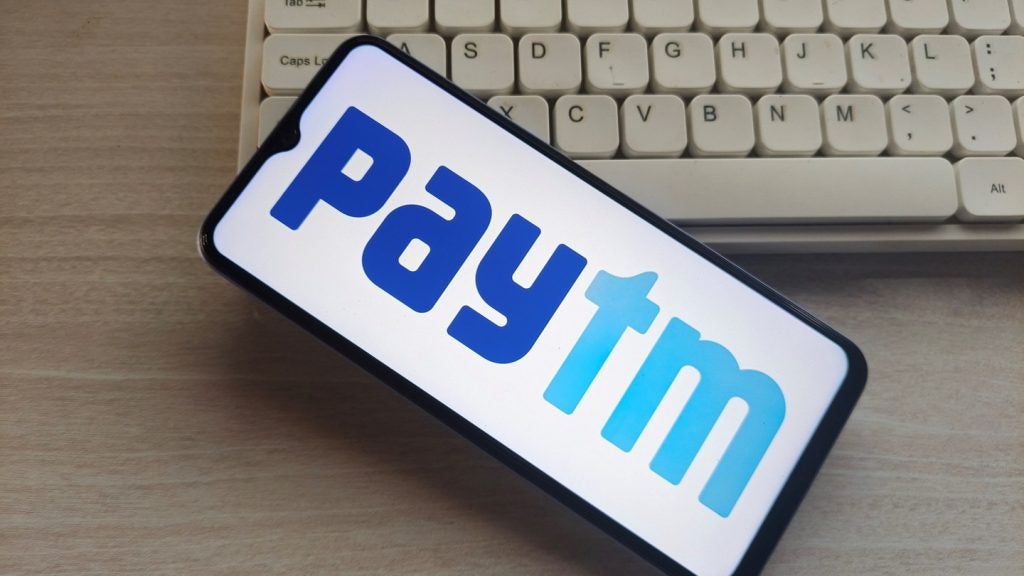Though France boasts one of the world’s highest levels of
non-cash payments, adoption of electronic payments in the fullest
sense has been hampered by an exceptionally high use of cheques.
Despite this, consumers’ enthusiastic adoption of online banking
and shopping indicates willingness to accept change.
 In the evolution
In the evolution
of non-cash payments in France one particular event stands out: the
revision of the Matignon agreement on labour relations in 1968 that
led to wages being paid on a basis as well as the requirement that
employers deposit wages in bank accounts. The impact of this is
seen 40 years on with 99 percent of the population now having a
bank account according to the Fédération Bancaire Française (French
Banking Federation).

Access deeper industry intelligence
Experience unmatched clarity with a single platform that combines unique data, AI, and human expertise.
The result is one of the highest levels of non-cash transactions
in the world – 236 per million people in 2006, according to the
Banque de France (BdF), France’s central bank. This placed France
fourth in the European Union (EU).
One legacy of having a highly banked population for so long is a
high use of cheques, a characteristic France shares with countries
such as the US, UK, Canada and Australia. In the EU the French rank
by far the highest users of cheques, a situation encouraged by
their ready acceptance by retailers, even for very low value
purchases.
In 2006 cheques ranked as the second most important payment
instrument cleared via the Systèmes Technologiques d’Echange et de
Traitemen (SIT), France’s retail interbank clearing system, with
settlements totalling €1.78 trillion ($2.23 trillion), or 34.4
percent of total settlements. According to the BdF, the 3.9 billion
cheques written in France in 2006 – one out of almost four non-cash
transactions – accounted for 78 percent of all cheques exchanged
within the euro area.
French companies are particularly heavy cheque users with cheque
payments in 2006 totalling €1.8 trillion, an amount almost equal to
corporate bank transfers that despite some progress are finding it
difficult to oust cheques.

US Tariffs are shifting - will you react or anticipate?
Don’t let policy changes catch you off guard. Stay proactive with real-time data and expert analysis.
By GlobalDataFrance’s use of cheques dwarfs the second highest user of
cheques in the EU, the UK, where, in 2006, 29.4 cheques were
written per one million people, less than half the 60.6 per million
people in France.
Also of note is that while the use of cheques in France is
falling, the pace is slower than in other high-cheque using
countries. For example, between 2000 and 2006 the number of cheques
written in the UK per million people declined on average by 7.2
percent annually compared with a decline of 3.2 percent annually in
France.
Fortunately, since July 2002 all but a minute number of cheques
have been truncated for electronic clearing via SIT which in that
year became France’s only retail automated clearing house. The SIT
is operated by the French Interbank Clearing Consortium established
in 1983 by the BdF, the major French banks and Banque Postale (Post
Bank).
Volumes settled via the SIT have increased significantly in
recent years, rising from 3 billion transactions in 1994 to 12.3
billion in 2006 valued at a total of €5.18 trillion ($6.57
trillion).
Resultant economies of scale have, according to the ECB, enabled
costs per transaction to be cut from €0.91 in 1994 to €0.37 in 2000
and €0.20 in 2006, an overall reduction of 78 percent.
 Hindering
Hindering
progress
The significant role played by cheques in France has to a degree
hindered uptake of more cost-effective forms of electronic
payments. This is evident in the average number of card payments
per person which in 2006, according to the ECB, stood at 88,
ranking France sixth in the EU behind the Netherlands (92), the UK
(110), Sweden (130), Denmark (142) and Finland (154). From a
positive perspective, payment cards represent the fastest growing
non-cash payment instrument in France, the total number of cards
increasing from 36.9 million in 2000 to 77.1 million in 2006. Of
total payment cards in issue in 2006 only some 5.5 million were
credit cards.
By far the greatest number of cards fall within the ambit of the
Groupement des Cartes (CB) a co-operative body established in 1984
by the major French banks. The CB, which has some 150 members,
focuses exclusively on debit and, in particular, delayed debit
cards which are often co-branded with Visa or MasterCard.
CB cards enjoy significant popularity and ended 2007 with 55.7
million in issue with, according to the CB, 88 percent of adults
having at least one CB card. Spending using CB cards totalled
€283.3 billion in 2007 or about one third of total French retail
spending.
But CB cards have lost ground in terms of market share.
Indicatively, the total transaction value using CB cards displayed
a CAGR of 8.6 percent between 2001 and 2006 while the total of all
card spending in France grew at a CAGR of 10.7 percent.
Despite increased competition the CB came under fire in 2007
from the European Commission (EC), the EU’s executive arm, for
anti-competitive behaviour. This followed a study the EC had
conducted into the CB’s activities since 2004.
In its findings released in October 2007, the EC stated: “The
Groupement has adopted price measures which hinder the issuing of
cards in France at competitive rates by certain member banks,
thereby keeping the price of payment cards artificially high to the
benefit of the major French banks.”
Specifically the EC noted: “The disputed measures are the
charges adopted by the Groupement, which have to be paid by certain
members under certain conditions on the basis of the number of
cards issued.
“Although, in principle, these tariffs are applicable to all
members of the Groupement, they have been applied by its management
and by the major French banks in such a way as to hinder the
issuing of cards by other banks at a price lower than that of the
large banks.”
The EC ordered the CB to cease all anti-competitive
practices.
Of note, a study conducted by the CB in 2007 found that only 17
percent of French adults have more than one payment card for
personal use. However, the average number of cards per person in
France has increased, having risen from 0.61 in 2000 to 1.22 in
2006.
Growth in payment card numbers is reflected in their increased
use for retail purchases which based on transactions made in
France’s POS network of 1.25 million devices (end 2007) increased
at a CAGR of 9.94 percent between 2000 and 2006.
In addition, in what also suggest a declining use of cash, cash
withdrawals from France’s ATM network of 51,586 machines (end 2007)
grew at a slower CAGR of 7.22 percent between 2000 and 2006 with
total withdrawals of €100.3 billion recorded in the latter year.
However, according to the BdF notes and coins in circulation in
France actually increased at a faster pace rising from €341.2
billion at the end of 2000 to €576.9 billion at the end of 2006, a
CAGR of 9.15 percent.
Whatever, the scope clearly exists for increased use of non-cash
instruments for regular transactions. One instrument presenting
particular attraction is prepaid gift cards though under French
banking regulations it is a market that remains firmly under
banking industry control.
The CB moved into the prepaid market in late-2005 with the
launch of a gift-card as part of its Carte Bleue product range.
Unlike gift vouchers which are largely restricted to use at an
issuing merchant’s shops the CB gift-card card can be used at all
CB merchants. The CB estimates that the French gift-card market is
potentially worth between €30 billion and €50 billion annually.
This compares with a gift voucher market of only €1.6 billion in
2006.
The CB also sees scope for cards to replace cheques for
corporate travel and entertainment expenses which account for some
50 billion payments annually, often by cheque. Corporate cards,
believes the CB, have the potential to replace cheques for
expenditure totalling €60 billion annually in these areas. A survey
by the CB in 2007 revealed only 5 percent of French companies made
use of corporate cards.
Open to change
While the French may be slow at changing certain payment habits,
this cannot be said of their adoption of internet banking, as a
study conducted in August 2008 by specialist internet research firm
comScore confirms.
In the study covering 37 countries comScore ranked France as
number four in penetration of online banking, with 46 percent of
French internet users aged 15 and over having accessed at least one
online banking site in August 2008. This represented an increase of
28 percent compared with August 2007 and ranked France behind only
Canada (64 percent), the Netherlands (51 percent) and Sweden (47
percent).
In addition comScore noted that French internet users also
exhibited high frequency in accessing online banking sites, with an
average of 6 usage days and 7 online banking visits per visitor in
August. France had 32.2 million internet users in August,
indicating that almost 15 million people are internet banking
users.
In a French internet banking market that comScore’s European MD
Herve Le Jouan, described as “fiercely competitive,” France’s
largest retail bank Crédit Agricole led the field with 6.88 million
unique visitors to its online banking site, an increase of 41
percent compared with August 2007. Crédit Agricole was well ahead
of its closest rival Société Générale which had 3.03 million unique
visitors, an increase of 32 percent.
The most impressive gain in online banking business based on
traffic in August was achieved by internet only bank ING Direct, a
unit of Netherlands bancassurer ING Group, which registered an
increase of 209 percent to 757,000 unique visits. ING Direct first
entered the French market in 1999.
In an examination of the demographics of online banking users
comScore found that the 25 to 34 year old segment has the broadest
usage of online banking services with 51.4 percent of internet
users in this age group regular online bankers. In the 35 years and
older categories use of online banking is also high, averaging just
over 47 percent.
The French have also taken enthusiastically to online shopping
with a study covering 48 countries published by internet analysis
specialist Nielsen Online in early 2008 revealing that 94 percent
of French internet users had made at least one purchase online.
This ranked France eighth.
More telling was that based on recent online shopping activity
66 percent of French internet users had made at least one online
purchase between October and November 2007. This ranked France
fourth behind Switzerland (67 percent), the UK (76 percent) and
Korea (76 percent).
According to the CB French internet users spent a total of €13.5
billion online in 2007, an increase of 12.5 percent compared with
2007. Of the total spending in 2007 CB cards were used for €10.2
billion, up 38 percent compared with 2006.
But despite widespread enthusiasm for online shopping many
French consumers are still have significant security concerns. Of
internet users who have yet to shop online a survey by the CB found
that more than three quarters were waiting for enhanced payment
security and personal data protection solutions. Even those
consumers who do shop online had reservations with 86 percent
believing that it is important to make payments even more
secure.
Fortunately improved security is on the way. On 1 October a
regulation came into force shifting liability for fraud-related
losses incurred in online credit and debit transactions from the
merchants to banks. This has jolted banks into action with French
transactions security solutions vendor XIRING reporting that it had
received its first ever order for its Xi-Sign two-factor security
device from a French bank in the third quarter of 2008.
This should give online commerce a useful boost and together
with adoption of new solutions such as contactless payments, France
can be expected to swing towards more efficient payment methods in
the years ahead.
Indicatively, Consultancy CapGemini predicts by 2013 cards will
account for just under half of total payments by volume, up from 38
percent in 2007, while cheques will have fallen to about 12 percent
of the total, down significantly from 24 percent in 2007.






